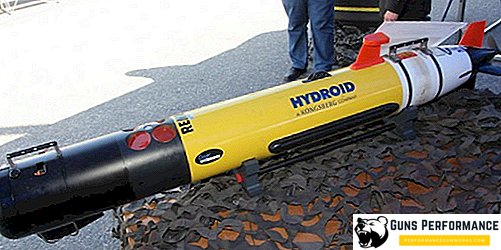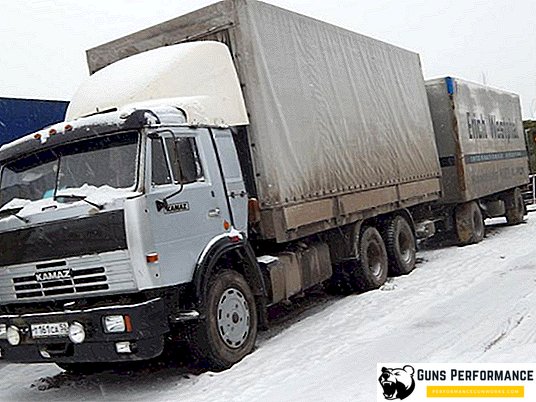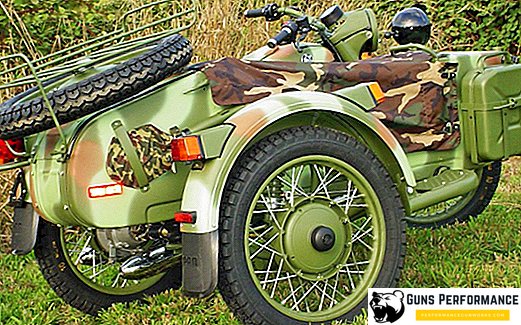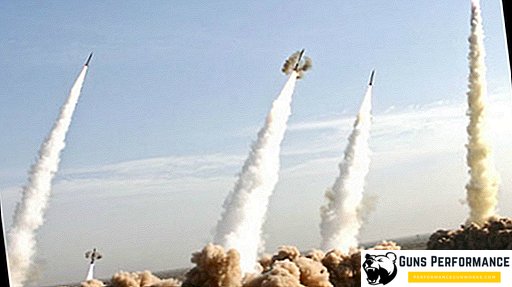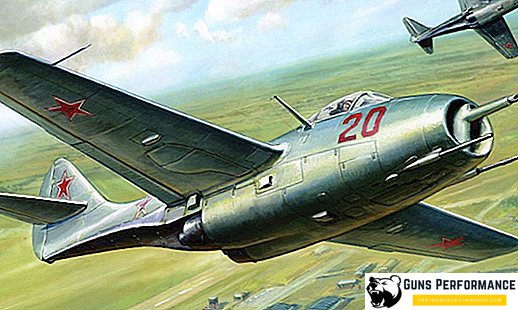ZIL-117 is a premium car produced during the Soviet era. The project was developed on the basis of the 114th model. He retained the main design direction: austere style and angular shapes. At first glance, reduced length catches the eye, giving the car more swiftness and elegance. For body painting used black, dark blue and dark cherry color.
General information about ZIL-117
At the Likhachev plant, transport was developed as more modern, maneuverable and speedy, unlike the previous generation. Despite this, government tuples were seldom used; preference was given to the limousines of the 114th version, the Chaika and the Volga.
According to some information, the car was developed by the personal order of L.I. Brezhnev. He wanted to get a status, but fast car, as he preferred to move along the roads of Moscow without a driver. Many witnesses in the 70s told how they saw Brezhnev behind the wheel of their own, shortened ZIL.

Status ZIL-117 was considered lower than the 114 and 115 models. It was intended for members of the Politburo and the government of the USSR. During the last years of stagnation, the nearest assistants to the general secretary used these machines. When Yu.V. Andropov, this idea was abandoned.
The main version of the appearance of the ZIL-117
There are three main reasons for which created a "shortened" limousine. None of the three have documentary evidence.
According to the first version, the order for the development of passenger vehicles was made by the management of the 9th KGB Directorate. This department was responsible for the security of the first persons of the state. Employees needed a maneuverable, fast and comfortable car, which made it easier to fulfill security duties. The version raises many doubts, but the main one is the release date (5 years later than the standard 114th generation). If there was a real need, shortened modifications produced in small batches in parallel with limousines.
The next “myth” is personal dissatisfaction with the dimensions of the executive car L.I. Brezhnev. In 1966, at the show of final versions in the Kremlin, the general secretary expressed his displeasure with the chief designer regarding the size. He believed that the dimensions deprived the driver of pleasure to drive the car. This overlaps with the rumors that Brezhnev wanted to get a fast car that he could drive himself. To meet the needs of the first man of the Union could collect several individual copies without spending money on serial production.
The most truthful version is considered the struggle at the top of political power. Candidate members of the Politburo were content with outdated “Seagulls”, which in appearance and characteristics were inferior to ZIL-114. Since the external attributes acquired significance at the time, the officials of the second political echelon did not want to give in to the first persons of the Union. Therefore, the development put "117th". This version is questionable, since members of the Politburo could not make state orders of this size.

Construction ZIL-117
Car ZIL-117 - good processing "114th". Much the same in appearance, trim and technical characteristics.
The first difference between the cabin - the back row is moved to the front to reduce the length. Despite this, the comfort of being in passenger seats has not deteriorated. Such a step saved half a meter of length. Interior decoration is preserved. Designers planned to make the body bearing, but because of this, would have to develop everything from scratch, set the reinforcement frame. This would increase the mass of the car. To solve the problem, the engineers replaced the peripheral frame with a stamped-welded ladder type.
The wheelbase has become shorter by 48 centimeters. The shortening of such elements as the body, the propeller shaft, the pipeline and the wiring saved another half a meter. More differences in the "iron", compared with the "older brother", no.
Engine ZIL-117 remained unchanged. Eight-cylinder engine with a V-shaped arrangement of cylinders. He had impressive performance: 300 horsepower, allowing it to accelerate to 190 km / h. The structure of the power plant was complemented by a four-chamber carburetor, a hydraulic valve tappet and a transistor ignition system. A two-speed automatic transmission with a torque converter has been preserved. In 1975, it was replaced by a three-stage GMF.

Suspension changes are not suffered. It provides a smooth and smooth ride on asphalt and primer road surfaces. The main feature of the suspension design is the anti-roll bar and torsion bars, which act as an elastic element. The noise in the cabin is reduced by attaching the suspension to the frame - with the help of rubber hinges.
The brake system consists of two circuits. Each works with a pair of pads on wheels located diagonally relative to each other. This is done to improve safety: in case of a breakdown of one of the circuits in the process of movement, the car could surely slow down. There is a force limiter in the rear brakes. The vacuum booster complements the brake master cylinder. In the contours of the front and rear brackets there are hydraulic boosters. The parking brake is operated by pressing the pedal. It is based on a mechanical drive. It affects the brake drums of the rear wheels. The parking brake is operated with faulty hydraulics. At the beginning of movement, the parking brake was deactivated automatically.
The key point of the auxiliary systems are servos. Due to them, glass washers, electric windows work, antennas move forward, door locks are locked and the radio tunes.
Specifications:
- Length - 5.7 meters;
- Width - 1.5 meters;
- Height - 3.3 meters;
- Wheelbase - 3.3 meters;
- Clearance - 17 centimeters;
- Weight - 3.2 tons;
- Engine capacity - 7 liters;
- Power - 300 horsepower;
- Gearbox - automatic;
- Maximum speed - 190 km / h;
- Fuel consumption - 18 liters per 100 kilometers.
Inside, the partition between the front and rear rows was abolished. Leather is covered with not only the front seats, but also the rear sofa. There are no armrests; therefore, communications equipment and remote controls were placed in a massive structure located between the front wheels. Implemented a separate air conditioning system: for the driver and passenger areas.
Between the rear doors are now placed "high-ranking" passengers. In this case, the glass in front of the rear pillars are preserved. The rear pillars had to be made stronger, as their number dropped from eight to six. The angle of inclination at the leading edge of the rear pillars has changed, because of which the shape of the rear doors has changed. The rear doors are equipped with blind windows.

The wheel arches and the edges of the rear wings received a new decorative element - chrome moldings. The design of the 114th model was preserved, as it met the modern requirements of the premium class. Despite the reduction in length by half a meter, the appearance of the transport did not deteriorate, but only played with new colors. From the "limousine" shortened version differed ease and everyday life, although it performed the same role - transportation of the first persons of the state. For ordinary citizens, the “114th” seemed inaccessible, and the ZIL-117 model was defined as a machine on which you can move daily.
ZIL-117V
ZIL-117V is an open version of the executive class car, which was developed on the basis of a shortened version, not of a “limousine”. Despite copying the analogue, the modification with the “B” index received many distinctive features.
The first problem faced by the developers - the deterioration of body rigidity due to the abolition of the side and rear pillars. To eliminate the drawback, each panel was equipped with its own additional amplifier. The frame remained the same - stamped-welded ladder. For the first time, stiffness criteria were presented to the doors of the "open version".
For several years, past after the release of the classic version of the ZIL-117, design trends have changed a little. The phaeton received four round headlights placed in a square frame covered with chrome. In addition, the design has a chrome-plated radiator with a pattern and open arches of the rear wheels.
Device cabin saved with a sedan. The interior is trimmed with high-quality leather, which has served for many years. Communication devices and remote controls again changed the dislocation - they were moved to a special console, which is located between the front seats.
Specifications:
- Length - 5.7 meters;
- Width - 2 meters;
- Height - 1.5 meters;
- Wheelbase - 3.3 meters;
- Clearance - 17 centimeters;
- Weight - 3.3 tons;
- Engine capacity - 7 liters;
- Power - 300 horsepower;
- Gearbox - automatic;
- Maximum speed - 190 km / h;
- Fuel consumption - 18 liters per 100 kilometers.
The main purpose of transport - a demonstration in parades. For this, it was equipped with a microphone and a radio station. The front passenger seat was removed, it was replaced by a stand, which could hold a standing man. The body was painted in gray-green color, awning in light gray. The plant named after Likhachyov collected three copies. First appeared on Red Square in 1972, after that participated in all military parades until 1980. "B" was replaced by ZIL-41044. Technical equipment is the same as the version of the "sedan".

What can be concluded?
ZIL-117 - high-quality transport of its time. He possessed a reliable design, worked stably and did not require frequent repairs. With careful operation took several hundred thousand kilometers without major repairs.
Used to transport the leaders of the country, members of the CPSU, the KGB and the leaders of the army. In the people because of the representative class, he was called "chlenovoz". Appeared in the film industry in the movie Casino Royale.




